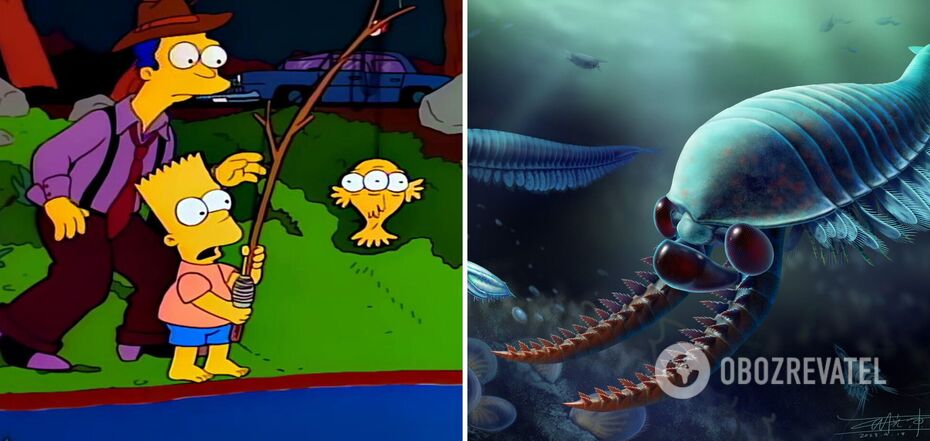Life
Simpsons predicted it too: the remains of a three-eyed sea creature that lived 520 million years ago have been found
Scientists have discovered a 520 million-year-old fossil of an arthropod relative of insects and crustaceans with three eyes in southern China. The creature named Kylinxia zhangi fills a gap in our understanding of how invertebrate animals evolved.
The findings are reported in the Current Biology. The discovery was made near the city of Chengjiang in Yunnan province in southern China. The Chengjiang biota consists of more than 250 species of well-preserved organisms from the Cambrian period (about 540-485 million years ago).
The animal discovered was the size of a large shrimp and had two large forelimbs, which scientists believe were used to catch prey.
This period in Earth's history is known as the Cambrian Explosion, the sudden appearance of many new organisms, including the evolution of all major body plans in the animal kingdom.
It was also during this period that the evolution of eyes took place. Some of the creatures may have had one eye and some may have had three or possibly more. Scientists call this a period of "evolutionary experimentation". In this way, nature tried to find the optimal traits that would be useful for different species.
Kylinxia zhangi, similar to the three-eyed Blinky fish from the Simpsons cartoon series, had one more eye than most vertebrates. Now some invertebrates have different numbers of eyes, including the nail shrimp, which has 3 eyes.
Thanks to Kylinxia zhangi, scientists will be able to learn more about the evolution of arthropods, a family that includes crabs, spiders, insects and other animals with exoskeletons.
The bodies of such creatures are divided into segments, most of which carry paired articulated limbs.
Although arthropods such as trilobites are often found in the fossil record, usually only the hardest parts of their bodies remain fossilized.
The Kylinxia fossil, on the other hand, is nearly complete. This finding allowed the researchers to image the head with a CT scanner and reveal the soft anatomy.
They were able to establish that the animal's head is divided into six segments: the front one with eyes, the second with a pair of large grasping limbs and the remaining four with joint limbs.
"The preservation of the fossil animal is impressive. After CT scanning, we can digitally unwrap it and look into the face of what was alive over 500 million years ago," said the study's lead author, Robert O'Flynn, a Ph.D. student at the University of Leicester in the UK.
Earlier OBOZREVATEL spoke about the fact that scientists found the remains of a bird, which may turn out to be the ancestor of every chicken on the planet.
Subscribe to OBOZREVATEL channels on Telegram and Viber to be aware of the latest events.





























